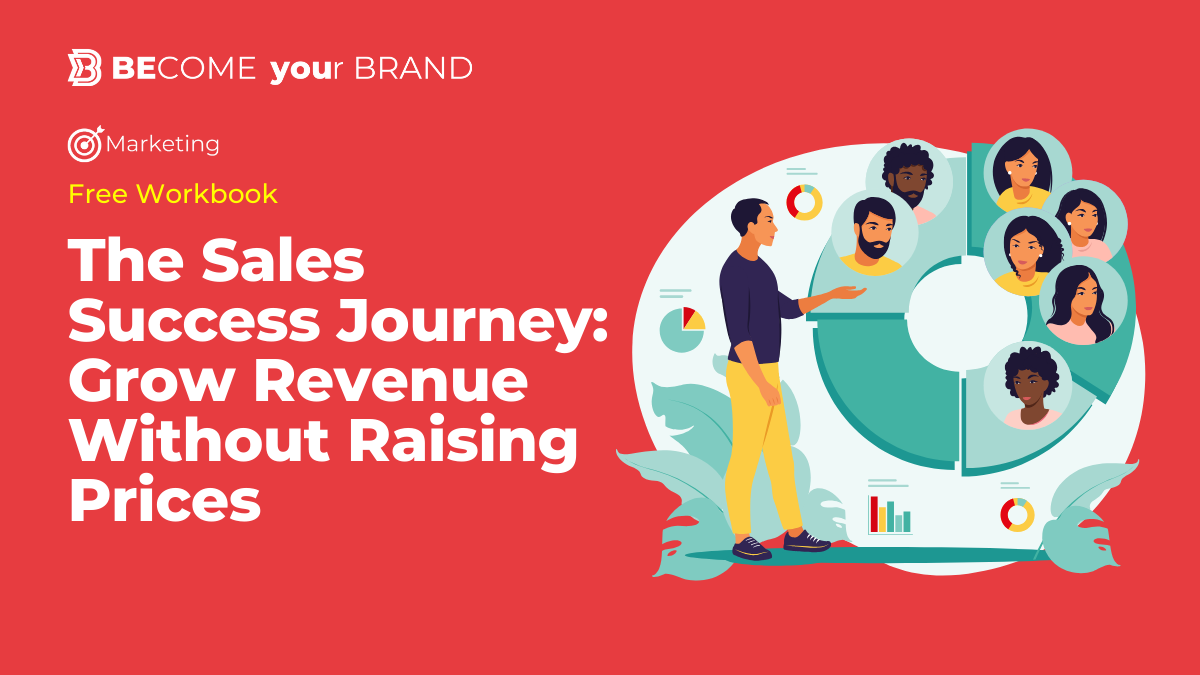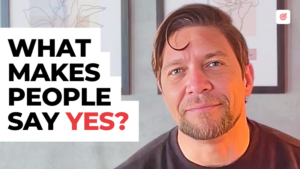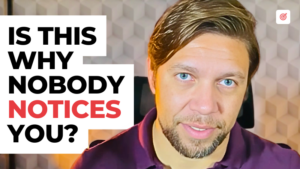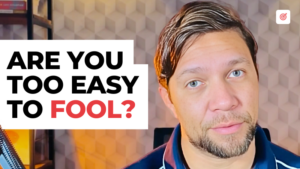
.
✅ FREE WORKBOOK: The Sales Success Journey: Grow Revenue Without Raising Prices
Why is it so hard to say no to someone who’s done something for you?
You didn’t ask for it. You don’t owe them anything. And yet, you feel like giving back.
You think you’re making a logical choice there. But no. The choice was already made for you before you even realized it. Before you even knew if it was in your best interest.
How did that happen?
In the book Descartes’ Error, Antonio Damasio talks about this as part of our nature:
“We are not thinking machines. We are feeling machines that think.”
What if the invisible forces shaping your decisions are not based on logic, fairness, or even free will?
Now, imagine if you could break these forces down into a formula. A formula made of 3 triggers so ingrained in how we interact, that they shape every “yes” you’ve ever given… or been given.
Once you see this formula, you won’t just understand why people say yes.
You will know how to make them want to.
Trigger #1: The Reciprocity Effect
You don’t just make choices. Choices are made for you.
We like to think we decide based on logic but most of the time decisions are not entertained. They’re felt.
You feel that an act of generosity creates an obligation. That’s cognitive dissonance. Our minds are wired to correct imbalances in social exchanges.
When someone gives first, without asking for anything in return, it creates psychological tension. A gap between what we have received and what we have given. And that tension demands resolution.
That is the first of the 3 triggers of persuasion.
We call it The Reciprocity Effect.
One of the most powerful, automatic forces in human behavior.
And here’s where it gets interesting…
The Reciprocity Effect dictates who we engage with, who we follow, and who we buy from—even when we don’t realize it.
Because when something feels natural—when it aligns with how we already think, feel, or act—we don’t resist it. Why would we?
That’s what I meant when I said: You don’t just make choices. Choices are made for you.
And maybe that’s why people don’t like to be sold… but they love to buy.
So, instead of convincing people to trust you… what if you just give first?
- If you’re in a conversation, you could share value before making a request.
- If you’re building an audience, you could offer a small piece of engagement first.
- If you’re a brand, you could provide a free trial that actually helps, before a sales pitch.
And then, you wait.
No rush. No ask. Just let reciprocity do what it naturally does.
And the moment you do that—when the loop starts to close—you won’t have to push people toward you.
They will already be moving in your direction.
The Reciprocity Effect pulls us toward people who give first. It’s instinctive. Automatic. A silent thread that ties us closer to those who create value before asking for anything in return.
But what if… that’s only half of the story?
What if there’s another, almost opposite mechanism at play—one that doesn’t just deepen connections when someone gives to us…
…but also when we give to them first?
It doesn’t feel like it should work that way, does it?
- I give something to someone… and then I start to like them more? How does that make sense?
Sounds backward, I know. But it happens. And it changes everything.
That is the second of the 3 triggers of persuasion.
We call it The Ben Franklin Effect.
Trigger #2: The Ben Franklin Effect
Benjamin Franklin was a writer, scientist, and diplomat—one of the most influential figures of the 18th century.
Naturally, someone like him had rivals
One in particular openly opposed him, refused to work with him, and had made it clear: he wanted nothing to do with Franklin.
Now, most people would handle this in one of two ways:
- Ignore that person.
- Try to win them over with kindness, generosity, or favors.
Franklin did neither.
Instead, he did something completely counterintuitive.
He asked the man for a favor. A simple one.
He asked to borrow a rare book from the man’s personal collection. And for some reason… he agreed.
Franklin thanked him, returned the book as promised, and something strange happened.
That same rival—the one who wanted nothing to do with him—suddenly started warming up to him.
Not because Franklin had done something for him. But because he had done something for Franklin.
Why?
Because the more effort we put into something, the more valuable it starts to feel—even if that value was not there before.
When we do something for someone—even something small—our brain has to make sense of it.
Instead of questioning the action, our brain takes the easiest possible path to resolve the contradiction.
It adjusts our beliefs to match our actions.
Instead of thinking:
- “I don’t like this person, so why did I help them?”
It’s easier to think:
- “I must like them… otherwise, why would I have helped them?”
And boom, without realizing it, we feel more connected to the person we just helped.
Now, here is why this matters the most.
The Ben Franklin Effect is not just about personal relationships. It’s about influence.
Sometimes, trust is built by asking for something small.
- Not a big request.
- Not a commitment.
- Just a tiny action.
Because the moment someone takes even the smallest action toward you, their brain starts justifying it.
They convince themselves they’re interested. They trust you. They want to see more.
- That’s why when you recommend a movie to a friend, you start feeling more connected to that movie yourself.
- Or why brands don’t just ask for purchases—they ask you to vote, comment, or share.
The second someone acts toward you, they’re not just considering you anymore.
They’re invested in you.
Now, let’s take this one step further.
Because so far, we’ve talked about what pulls us closer—reciprocity and investment.
But here’s something different.
Not everything that influences you is based on logic. Deep down, the things that drive you toward something. The things that make you say yes without hesitation…
Are not things you need. They are things you want.
That’s the third and last trigger of persuasion.
We call it The Want vs. Need Effect.
Trigger #3: The Want vs. Need Effect
Here is how it plays out.
Imagine you’re planning a vacation. Let’s say, to the Bahamas.
You start exploring the islands, the beaches, the incredible things you’ll experience there. You see the prices—it’s not exactly cheap, but you’re excited. You’re already picturing yourself there, feeling the sun, tasting the food, living the experience.
And without even thinking about it, you start figuring out how to make it happen. Payment options, savings, adjustments—you will find a way.
But there’s another part of planning that same trip. Booking the flight.
And this part feels very different, doesn’t it?
You’re not excited. You’re not imagining the experience of sitting on a plane. You don’t look forward to it—you just want it out of the way.
So instead of enthusiasm, your brain shifts gears:
- “What’s the cheapest flight?”
- “What’s the most convenient schedule?”
- “What’s the quickest route to just get me there?”
Why does your mind behave so differently about these two parts of the exact same experience?
Because lying on a beach in the Bahamas? That’s something you want.
But sitting on a cramped airplane? That’s just something you need… to get what you want.
Think about how differently you approach those two things.
For the things you want—the things that excite you, that feel personal, that align with your identity—you’re willing to invest more. Not just money, but energy, emotion, and effort. You enjoy the thought of it. It feels like you.
But for the things you need—the practical, logical, necessary things—your focus shifts. You look for the cheapest, the fastest, the easiest way to take them off your plate. You don’t feel invested. You feel obligated.
And obviously, this is not just about vacations and flights. It’s about every decision you have ever made.
Think about it:
- Why do people invest in dream cars, but search for the cheapest insurance?
Let’s be smart about this. If you were a business, what would you like to sell? Wants or Needs?
Would you like to be the car dealer or the insurance provider in this example? Which one can push higher prices to consumers? Which one can build a brand?
People pay any price to buy feelings.
And here is how Wants and Needs align with that:
- People will pay any price to feel they got what they WANTED.
- People will pay as little as possible to feel they got what they NEEDED.
That’s why nobody is loyal to airlines. No one dreams about which airline they will take. They just pick the cheapest ticket and move on.
Because needs are not the goal. They’re just the price we pay to get to the goal.
The most successful brands, creators, and businesses don’t sell needs. They sell wants in the form of identity, aspiration, and transformation.
Because when what you offer aligns with who people are—or who they want to become—logic doesn’t stand a chance, and price becomes secondary.
So if you look at what’s really happening, you’ll see that there’s a formula working behind the scenes.
A formula that pulls people toward a desired and designed end. A formula behind success and wealth.
We call it: The Low-Pitch Sales Formula.
The Low-Pitch Sales Formula
A formula made of the three triggers we’ve seen here:
- The Reciprocity Effect. When someone gives first, we feel pulled to give back.
- The Ben Franklin Effect. Once we take action—even a small one—we convince ourselves it was the right choice.
- The Wants vs. Needs Effect. Emotions justify decisions, not logic.
And when all three come together?
That’s when persuasion stops feeling like persuasion.
- Giving triggers Reciprocity. People feel naturally inclined to engage.
- Inviting triggers Investment. A small action makes people feel committed.
- Providing what people want taps into Desire. We chase what excites us, not what we need.
This is how the Low-Pitch Sales Formula works.
Give. Invite. Provide.
Give before you ask. Invite before you sell. Provide what people want.
Because when people feel valued before they commit, when they take even the smallest step toward you, and when what you offer speaks to their wants, not just their needs…
Saying yes doesn’t feel forced—it feels natural.
Every choice you have ever made is shaped by this invisible formula.
Now you know what most people never will: That persuasion doesn’t start with pressure. It starts with understanding.
And when you understand what makes people move, you don’t chase outcomes.
You create them.




